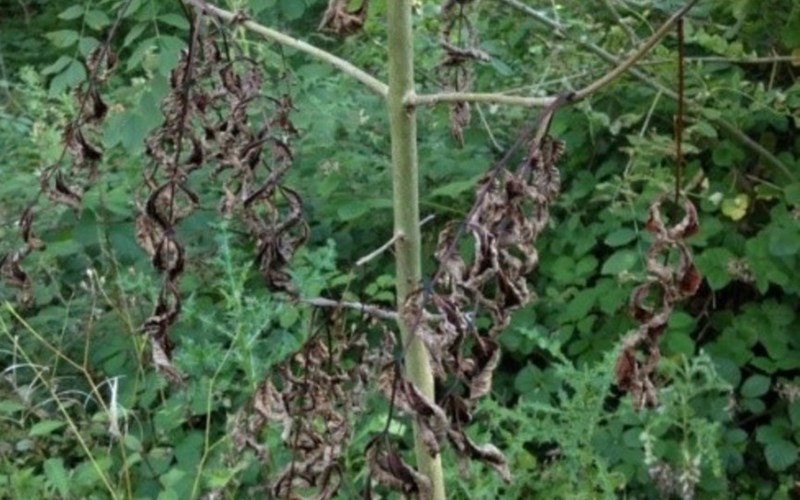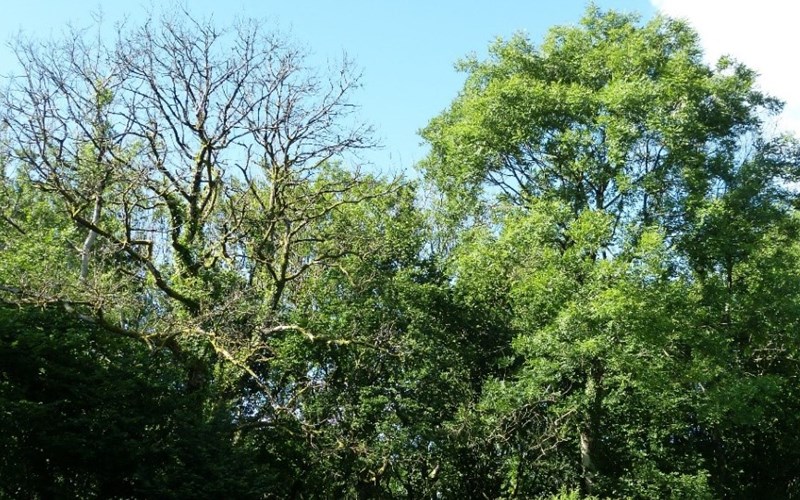16/09/2020
What is ash dieback?
Ash dieback is a serious disease of ash trees which is caused by the fungus called Hymenoschyphus fraxineus, which is of eastern Asian origin. The disease is present in most parts of the United Kingdom. Symptoms of this disease is leaf loss and crown dieback and it can lead to the death of the tree.
Research shows disease can kill young and coppiced ash trees really quickly, but older trees can resist it for some time until prolonged exposure, or another pest or pathogen has attacked them, which in their weakened state eventually causes them to succumb.
What are ash dieback symptoms?
The first symptoms to indicate if an ash tree may be infected is blackening and wilting of leaves and shoots during July – September, as shown below.

These months are the best months to survey ash trees for symptoms. Once autumn begins in late September or October, the seasonal change of colour in the leaves could cause confusion and be mistaken for the disease.
Small lesions or spots may also appear on the bark of stems and branches. If the bark is peeling, the wood underneath may have a brownish to grey discolouration. As a whole, affected trees will show extensive dieback of shoots, twigs and branches.
Why is ash dieback so dangerous?
When one tree is infected, it can spread locally up to tens of miles which is caused by the wind blowing spores of the fungus. When the distance has increased it is probably due to the movement of diseased ash plants. Currently, there is a prohibition on importation and inland movements of ash seeds and plants.
There is no cure for ash dieback, and no clear evidence for stopping the spread.
How can we minimise the spread of ash dieback?
Minimising the spread of ash dieback can be done simply by brushing any soil, mud, twigs or other plant debris from footwear and wheels of any bikes, cars, buggies and wheelchairs before leaving a site. Washing these items before visiting another site like where you have just visited is helpful.
Gardeners or owners of parks of woodlands can also minimise the risks by collecting all fallen ash leaves and burying them, deep composting them or burning them, which will disrupt the lifestyle of the fungus.
What to do if you have a tree with ash dieback
If you suspect you have a tree with ash dieback you should report it through TreeAlert Britain.
You should also follow the above steps to minimise the risk of spreading ash dieback.
Finally, you can also get in touch with us. We can help with ash dieback by felling the trees that are infected. If ash dieback ultimately kills your tree, the tree will inevitably become a dangerous tree that is a hazard to its immediate area.

Ash dieback shown in tree canopy

